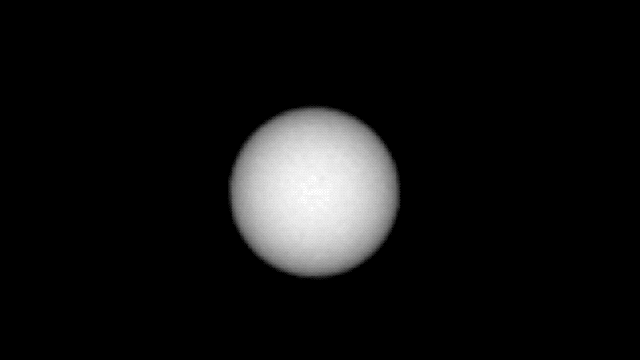There’s something completely sublime about watching solar eclipses from the surface of another planet, as showcased in these new videos captured by NASA’s Curiosity rover.
Mars has two small, oddly shaped moons. Phobos is the larger one at 27km across, while Deimos is just 14.5km in diameter. Using its Mastcam, Curiosity recently captured the moons passing in front of the Sun.
The NASA rover has done this before, but these new eclipse images, released by NASA this week, are among the best we’ve seen to date.
The Phobos eclipse was captured on 26 March 2019. The event is considered an annular eclipse because the moon doesn’t completely obscure the disk of the Sun.
The Deimos eclipse happened on 17 March 2019. Technically speaking, it isn’t an eclipse owing to the small size of the moon and how little of the Sun is actually being covered. This is more of a transit, similar to how distant exoplanets move across their host star, and are subsequently spotted from our vantage point on Earth.
A third series of images taken by Curiosity’s Navcam shows the shadow of Phobos crossing the Sun on 25 March 2019, which temporarily dimmed the Martian daylight.
Mark Lemmon of Texas A&M University, a co-investigator with the Curiosity Mastcam project, said observations such as these are improving our understanding of where these moons are located relative to Mars. Fifteen years ago, before the Spirit and Opportunity missions, the presumed location of Deimos was off by 40km, according to a NASA press release.
“More observations over time help pin down the details of each orbit,” said Lemmon in the NASA release. “Those orbits change all the time in response to the gravitational pull of Mars, Jupiter or even each Martian moon pulling on the other.”
These eclipses are important for science, and they’re undeniably awesome, but as Bad Astronomer Phil Plait pointed out back in 2012, they’re actually quite common.
Phobos orbits Mars pretty close in, just about 6000 km (3600 miles) above the surface of Mars – compare that to the 400,000 km distance from the Earth to the Moon! Phobos is so close that it transits the Sun pretty much every day for some location on Mars, making this something of a less-than-rare event.
Still, that doesn’t take away from how cool it is to see an eclipse from another world through the eyes of an intrepid rover.
[NASA]
